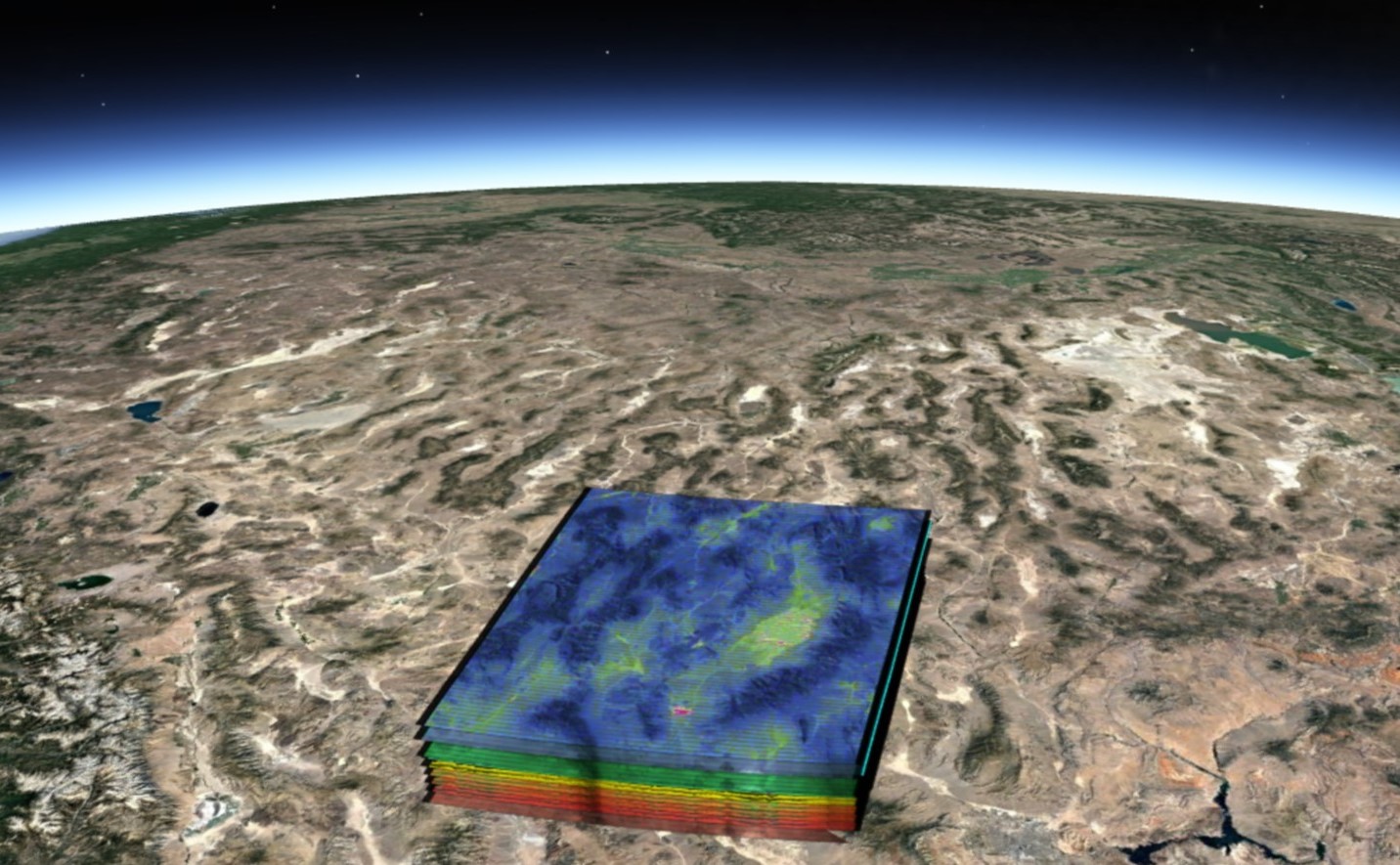
Spaceborne hyperspectral imaging is a revolutionary technology that has the power to unlock the mysteries of the universe like never before. By capturing detailed spectral information across a wide range of wavelengths, hyperspectral images provide scientists with a wealth of data about celestial objects, atmospheric conditions, and even the composition of distant planets. In this article, we will delve into the fascinating world of spaceborne hyperspectral imaging and uncover 19 captivating facts that will leave you in awe of the advancements in our understanding of the cosmos. From its origins and development to its applications and future potential, get ready to embark on a journey through the depths of space as we explore the incredible capabilities of hyperspectral imaging from the comfort of our earthly perspective.
Key Takeaways:
- Hyperspectral imaging helps scientists study Earth’s surface and celestial objects, leading to discoveries in agriculture, mineral exploration, and disaster management.
- This innovative technology provides valuable insights into environmental changes, climate dynamics, and natural resource management, contributing to a better understanding of our universe.
Spaceborne hyperspectral imaging allows scientists to analyze Earth’s surface.
By capturing images at hundreds of different wavelengths, researchers can study the composition and characteristics of land, ocean, and atmosphere with unprecedented detail.
It provides valuable insights into environmental changes.
From monitoring deforestation and urbanization to tracking the health of coral reefs, hyperspectral imaging helps scientists assess the impact of human activities on our planet.
Spaceborne hyperspectral imaging is also used to explore celestial objects.
By studying the light reflected from distant planets, stars, and galaxies, astronomers can unravel their chemical makeup and gain insights into their formation and evolution.
It has led to the discovery of new mineral deposits.
Hyperspectral imaging has enabled geologists to identify previously unknown mineral resources by analyzing the unique spectral signatures associated with different minerals.
This technology plays a crucial role in precision agriculture.
By assessing the health and nutrient levels of crops, farmers can make informed decisions about irrigation, fertilization, and pest control to maximize yields and minimize environmental impact.
It aids in the detection of oil spills and water pollution.
Hyperspectral imaging enables rapid assessment of water quality by detecting and mapping contaminants such as oil, algae, and heavy metals.
Spaceborne hyperspectral imaging is used in archaeological research.
By examining spectral data, archaeologists can identify hidden structures, map ancient settlements, and even uncover buried artifacts that are invisible to the naked eye.
It assists in the study of atmospheric phenomena.
Scientists can analyze the spectral reflectance of clouds, aerosols, and other atmospheric particles to gain insights into climate patterns, air quality, and the effects of pollution.
Spaceborne hyperspectral imaging requires advanced imaging spectrometers.
These sophisticated instruments capture light across a wide spectral range and produce high-resolution data that can be used for detailed analysis.
It enables the mapping of underwater ecosystems.
By capturing imagery from satellites or drones, scientists can examine the health and biodiversity of coral reefs, seagrass beds, and other marine habitats.
Hyperspectral imaging is used in the identification of crop diseases.
By analyzing spectral signatures, researchers can detect disease symptoms in plants even before they become visible to the naked eye, allowing for early intervention and prevention of crop damage.
It aids in the monitoring of volcanic activity.
Hyperspectral imaging can detect changes in volcanic gases and thermal emissions, providing valuable information for predicting eruptions and ensuring the safety of nearby communities.
Spaceborne hyperspectral imaging helps in the study of forest ecosystems.
By analyzing spectral data, scientists can assess forest health, monitor deforestation rates, and estimate carbon storage, contributing to better forest management and conservation.
It facilitates the identification of landforms and geological structures.
By analyzing the unique spectral signatures of rocks and terrain features, geologists can map geological formations and study the Earth’s dynamic processes.
Hyperspectral imaging can be used for mineral exploration on other planets.
By analyzing spectral data from Mars or other celestial bodies, scientists can search for signs of minerals that may indicate the potential for past or present life.
It aids in the study of the Earth’s climate system.
By analyzing the reflectance of different parts of the electromagnetic spectrum, scientists can gain insights into climate dynamics, including temperature changes, ice melt, and atmospheric composition.
Spaceborne hyperspectral imaging is used in disaster management.
By providing detailed and timely information about the extent and impact of natural disasters like wildfires, floods, and earthquakes, this technology helps emergency responders make informed decisions.
It has applications in the field of remote sensing.
Hyperspectral imaging allows for non-invasive monitoring of the Earth’s surface, making it a valuable tool for studying and managing natural resources.
Space agencies around the world utilize hyperspectral imaging.
Organizations such as NASA and the European Space Agency (ESA) actively employ this technology to further our understanding of the universe and its many mysteries.
In conclusion, spaceborne hyperspectral imaging has opened up a whole new realm of possibilities for scientific research and exploration. Its ability to capture detailed spectral data has allowed scientists to study our planet, explore celestial objects, and gain valuable insights into environmental changes. With ongoing advancements in technology, we can expect even more fascinating discoveries to emerge from the field of spaceborne hyperspectral imaging in the years to come.
Conclusion
Spaceborne hyperspectral imaging is a fascinating field that holds immense potential for understanding our universe. With its ability to capture high-resolution data across a wide range of the electromagnetic spectrum, it provides us with a deeper understanding of celestial bodies, atmospheric compositions, and even Earth’s surface.By combining the power of cutting-edge technologies, scientists and researchers are able to unlock valuable insights into the mysteries of space. From studying distant galaxies and stars to monitoring our own planet’s health, spaceborne hyperspectral imaging has revolutionized our understanding of the cosmos.As we continue to explore and develop advancements in this field, the possibilities are endless. With each discovery, we inch closer to unraveling the secrets of the universe and expanding our knowledge of the vastness that surrounds us.Whether it’s uncovering new planets, analyzing the mineral composition of asteroids, or monitoring the effects of climate change, spaceborne hyperspectral imaging will undoubtedly continue to shape our understanding of space and the valuable insights it offers.
FAQs
Q: What is spaceborne hyperspectral imaging?
Spaceborne hyperspectral imaging is a technology that allows us to capture high-resolution images across a wide range of the electromagnetic spectrum to gather detailed information about celestial bodies, atmospheric conditions, and Earth’s surface.Q: How does spaceborne hyperspectral imaging work?
Spaceborne hyperspectral imaging works by utilizing sensors onboard satellites or spacecraft to capture data across numerous small and contiguous spectral bands. This vast amount of data is then analyzed to provide detailed information about the composition, temperature, and other properties of the objects being observed.Q: What applications does spaceborne hyperspectral imaging have?
Spaceborne hyperspectral imaging has various applications, including studying distant galaxies, stars, and planets, monitoring Earth’s climate, analyzing the composition of asteroids, monitoring vegetation health, detecting pollution, and identifying mineral deposits.Q: What are the benefits of spaceborne hyperspectral imaging?
Spaceborne hyperspectral imaging allows us to gather detailed and precise information about objects in space and Earth’s surface. It enables us to make significant scientific discoveries, monitor the health of our planet, detect potential hazards, and study the universe in unprecedented detail.Q: Are there any future developments in spaceborne hyperspectral imaging?
Yes, there are ongoing efforts to enhance spaceborne hyperspectral imaging capabilities. These include improving the resolution of sensors, developing advanced data analysis techniques, and launching more sophisticated satellites and spacecraft to capture even higher fidelity data.
Spaceborne hyperspectral imaging revolutionizes our understanding of Earth and beyond. Uncover more fascinating facts about earth observation technologies, remote sensing techniques, and geospatial analysis methods that shape our perception of the world. Embark on a journey of discovery as you explore the limitless potential of these cutting-edge tools in various fields, from environmental monitoring to planetary exploration. Stay curious and keep learning about the incredible advancements in space technology that continue to push the boundaries of human knowledge.
Was this page helpful?
Our commitment to delivering trustworthy and engaging content is at the heart of what we do. Each fact on our site is contributed by real users like you, bringing a wealth of diverse insights and information. To ensure the highest standards of accuracy and reliability, our dedicated editors meticulously review each submission. This process guarantees that the facts we share are not only fascinating but also credible. Trust in our commitment to quality and authenticity as you explore and learn with us.


